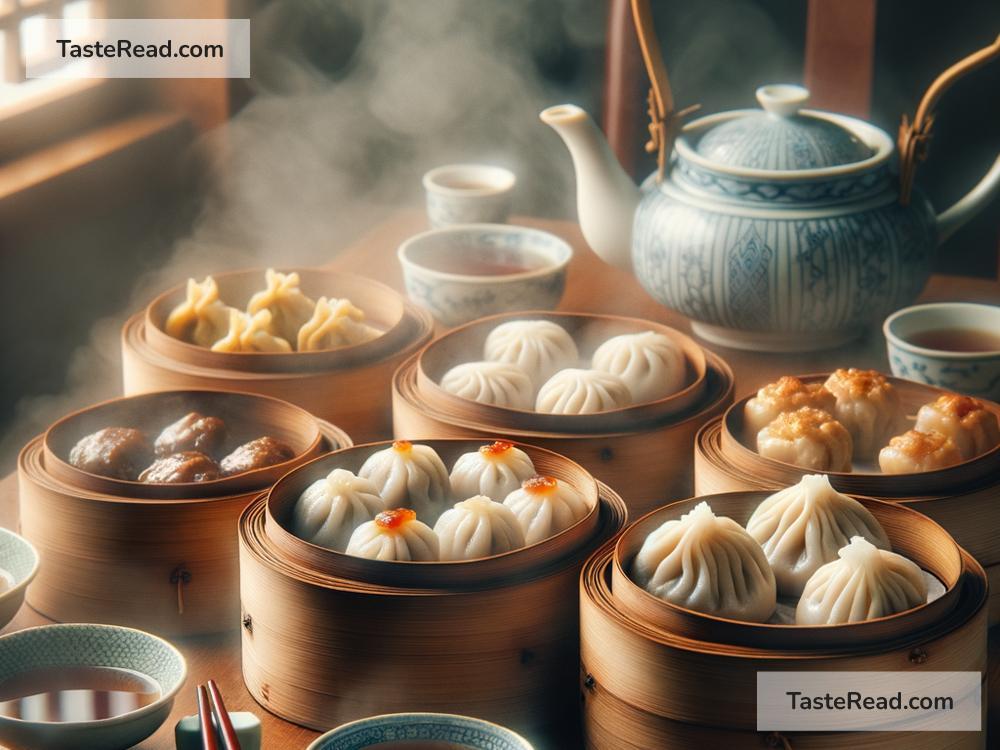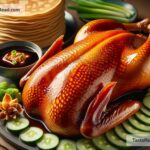The Story of Chinese Dim Sum
Dim sum is one of the most beloved styles of food in Chinese cuisine. These small, bite-sized dishes have captured people’s hearts and stomachs all over the world. They come in steaming baskets, small plates, and delicate bowls, making every meal feel festive. Behind the delicious dumplings, buns, and rolls is a rich history that spans centuries. Let’s dive into the story of Chinese dim sum and explore how it became the cultural treasure it is today.
What is Dim Sum?
Dim sum, which roughly translates to “touch the heart” in Cantonese, doesn’t refer to a specific dish. Instead, it’s a category of food made up of small, flavorful portions meant to be shared. It includes dumplings, buns, rice rolls, steamed vegetables, and even desserts. Dim sum is often paired with tea, making it more than a meal—it’s an experience that encourages conversation, bonding, and relaxation.
Dim sum is most famously associated with Cantonese cuisine, especially from the Guangdong region and Hong Kong. However, similar small dishes are found in other parts of China as well. Its diverse flavors and textures—sweet, salty, crispy, and chewy—showcase the creativity of Chinese chefs over the generations.
How Did Dim Sum Begin?
Dim sum comes from humble beginnings. Its story began on the Silk Road, the ancient trade route that connected China to Central Asia and Europe. Travelers, merchants, and farmers often stopped at roadside teahouses for a break during their long journeys. Tea was the main feature of these stops, but over time, teahouse owners began offering small snacks to go with the tea. These snacks were designed to give travelers more energy for their trips.
The concept of pairing tea with small bites grew in popularity. By the late Ming Dynasty (1368–1644) and early Qing Dynasty (1644–1912), tea drinking had become an important part of Chinese culture, especially in southern China. Teahouses evolved into social gathering spots, and snacks transformed into the dim sum we recognize today.
It was the Cantonese people who elevated dim sum to an art form. Over centuries, they refined the recipes and introduced innovative cooking techniques like steaming, frying, and baking. They created dishes that were not only delicious but also visually appealing. Dim sum became more than just food—it became a form of craftsmanship.
The Role of Yum Cha – “Tea Culture”
Dim sum isn’t eaten on its own; it is traditionally part of “yum cha,” which means “drink tea.” Yum cha is a practice that blends tea drinking with enjoying dim sum in a leisurely, social setting. Historically, yum cha was most popular in southern China, especially among the Cantonese-speaking communities.
Teahouses during yum cha hours were often buzzing with life. Families, friends, and colleagues gathered to talk, eat, and relax. Dim sum was served in steaming bamboo baskets or small dishes, and pots of Chinese tea were continually refilled. Yum cha became more than a meal—it was a form of community. The tradition carries on today, and many people view yum cha as a way to spend quality time with loved ones.
The Trolley Tradition
One of the most charming aspects of dim sum dining is the trolley tradition. In many traditional restaurants, servers push carts loaded with fresh dim sum through the dining area. Diners can see the dishes up close and pick whatever catches their eye.
The trolley system adds excitement to the experience, with diners eagerly awaiting their favorite dishes or discovering something new. Although some modern restaurants have adopted the order-from-a-menu style, traditional trolley service is still cherished for its nostalgic charm.
Popular Dim Sum Dishes
Dim sum is known for its variety, offering something for every kind of eater. Some of the most famous dim sum dishes include:
- Har Gow (Shrimp Dumplings): Steamed dumplings filled with juicy shrimp in a thin, translucent wrapper.
- Shumai (Pork and Shrimp Dumplings): Open-faced dumplings made from a combination of minced pork and shrimp.
- Char Siu Bao (BBQ Pork Buns): Fluffy steamed buns filled with savory-sweet barbecued pork.
- Cheung Fun (Rice Noodle Rolls): Silky smooth rice noodles rolled around meat, shrimp, or vegetables, often served with soy sauce.
- Egg Tarts: Flaky pastry filled with creamy, sweet egg custard.
- Sticky Rice in Lotus Leaf: Fragrant sticky rice mixed with meat or mushrooms and wrapped in a lotus leaf.
Each dish is thoughtfully made to balance flavors and textures, creating a truly satisfying meal no matter what you choose.
Dim Sum Today
Today, dim sum has spread far beyond China. It’s enjoyed in places like the United States, Canada, Australia, and the United Kingdom, where Chinese communities have introduced this special dining style. Restaurants all over the world now serve dim sum, and people from different cultures have fallen in love with the tradition.
While dim sum is rooted in history, it continues to evolve. Modern chefs experiment with new flavors, ingredients, and presentation styles, blending tradition with innovation. Whether you’re visiting a traditional teahouse in Guangdong or a trendy dim sum restaurant in New York, the spirit of dim sum—sharing good food and laughter—remains the same.
Conclusion
Dim sum is more than food—it’s a cultural experience with deep roots in Chinese history. From its beginnings as roadside snacks for travelers to the lively, social gatherings of yum cha, dim sum has always been about bringing people together. Its variety, artistry, and flavors make it a beloved tradition not just in China, but around the world.
So the next time you sit down to enjoy dim sum, remember that you’re taking part in a centuries-old tradition that truly “touches the heart.” Whether it’s a steaming bowl of dumplings or a flaky egg tart, every bite tells a story of connection, creativity, and joy.


